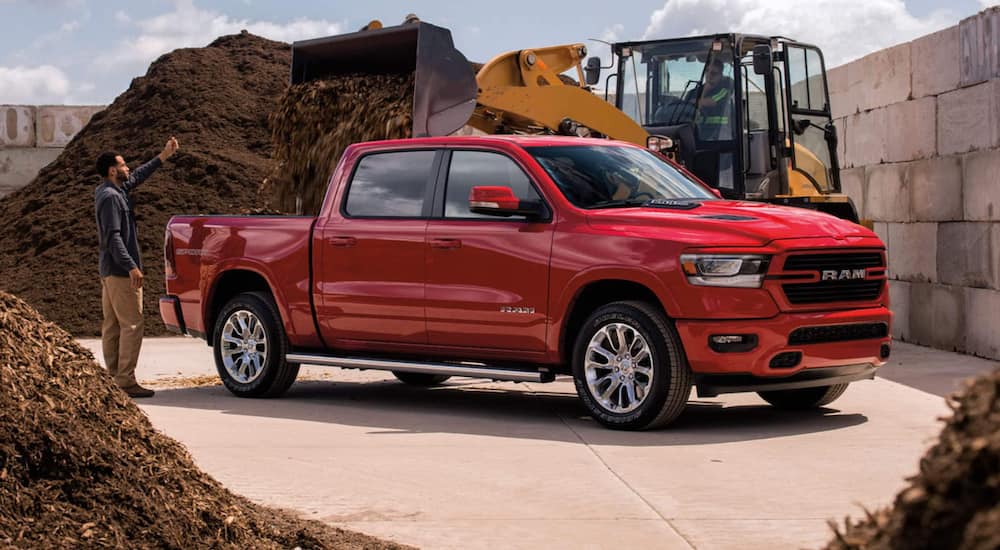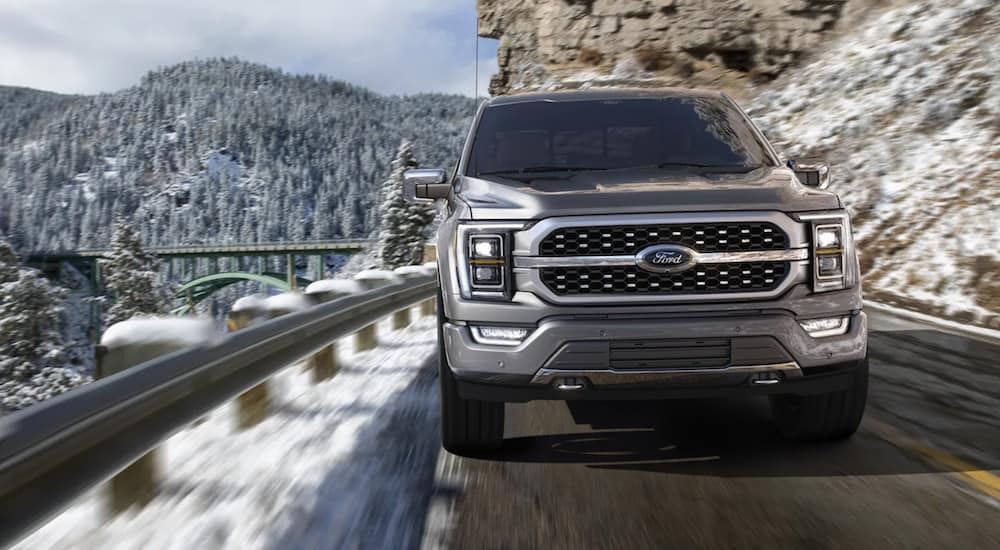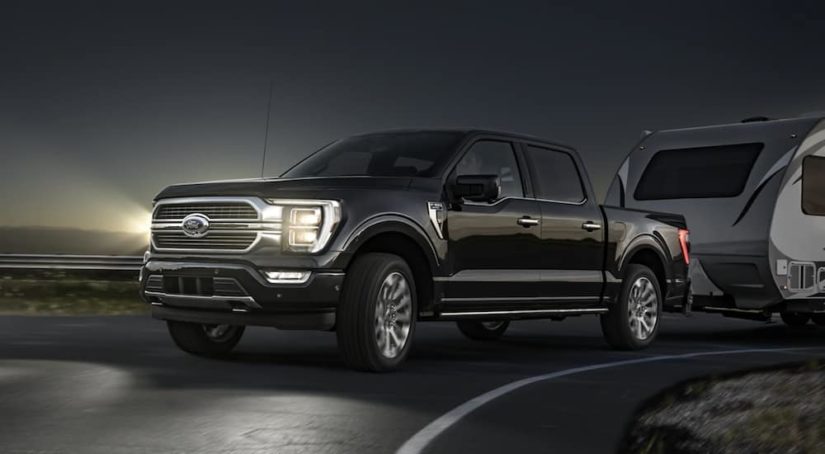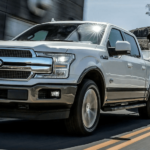All full-size pickup trucks are not created the same. The differences are sometimes subtle, but they’re there and could make the difference between owner satisfaction and a subtle feeling that you missed out. Take the 2021 Ford F-150 vs 2021 Ram 1500 – at first glance, these two fan favorites seem to possess similar characteristics, but is one better than the other?
We set out to find the answer to this question and more, to determine whether small details make a big difference in areas like capability and performance, areas that are critical to buyers in this segment. Trucks are tools for many pickup buyers, so specifications matter. The focus is on what it can do.
That’s not to say a little luxury isn’t welcome. Increasingly, buyers in this category are looking to up the luxury and convenience quotient. Pickup trucks are doubling as weekend family haulers, so they need to be comfortable and well-equipped for long road trips and busy Saturdays filled with around-town errands. Budget buyers, on the other hand, might appreciate knowing that the F-150 starts at $28,940 against $32,795 for the Ram 1500.
With all this in mind, which truck offers the best overall blend of features and can satisfy even the most demanding buyer? Is one more fuel-efficient or better-equipped to tow? We peel back the layers and study the spec sheets to determine the strengths and weaknesses of each in a quest to determine whether America’s best-selling pickup, the Ford F-150, dominates its worthy competitor, the Ram 1500.
Performance and Capability of the F-150
Capabilities are driven primarily by a truck’s powertrain. What’s under the hood of the F-150 and the Ram 1500? Both trucks offer a plethora of engines, each designed for different and specific driving characteristics. Both companies are attempting to marry fuel economy with output, but so far, Ford has the advantage for one major reason: the Ram 1500 isn’t offered in a hybrid powertrain.
The six engines offered for the 2021 F-150 include that exclusive, powerful, and efficient 3.5-liter PowerBoost Full Hybrid V6. This engine skillfully finds the sweet spot of power and efficiency, making 430 horsepower and delivering 570 lb-ft of torque while still making a staggering 25 MPG combined. It can even handle up to 12,700 pounds of towing capacity, which is more than any Ram 1500 can handle.
The non-hybrid 3.5-liter EcoBoost V6 engine delivers a slightly lower 400 horsepower and 500 lb-ft of torque, but its lighter weight results in a best-in-class tow rating of 14,000 pounds. This is definitely the right engine choice for heavy-duty towing and payload hauling. The intercooled twin-turbos are the source of almost immediate access to power without the hesitation (or lag) typically felt as you accelerate.
Diesel fans will love the long-lasting and durable 3.0-liter Power Stroke turbo-diesel, which provides 250 horsepower and 440 lb-ft of low-end torque. Meanwhile, the available 5.0 TI-VCT V8 spotlights horsepower, with 400 horses and 410 lb-ft of torque. An efficient 2.7-liter EcoBoost V6 delivers a surprising 325 horses and 400 lb-ft of torque while maintaining excellent fuel economy. Finally, there is the base 3.3-liter TI-VCT V6, with its 290 horsepower and 265 lb-ft of torque. All F-150 engines are paired with a 10-speed automatic transmission.

Performance and Capability of the Ram 1500
There are only four engine options available on the 2021 Ram 1500, giving you similar options as the F-150, but with less overall power. They also all come paired with a slightly less capable 8-speed automatic transmission. The 3.0 EcoDiesel V6 delivers 260 horsepower and 480 lb-ft of torque, paving the way for a respectable towing capacity of 12,560 pounds. The affordable and fuel-efficient 3.6-liter Pentastar base engine offers 305 horsepower and 269 lb-ft of torque, but towing capacity dips to nearly 500 pounds less than the Ford V6.
Two powerful 5.7-liter V8 HEMIs – one with eTorque and one without – both deliver 395 horses and 410 lb-ft of torque. The difference is that the eTorque mild-hybrid system provides some additional low-end torque, boosting the maximum towing capacity from 11,610 pounds to 12,750 pounds. It’s impressive but nowhere near as robust as the F-150’s max 14,000-pound towing specification. The mild-hybrid setup also does little for fuel economy, only managing to eke out 19 MPG combined.
Overall, the F-150 comes out on top when it comes to capacity, offering higher max tow ratings from the base V6 all the way up to the most powerful EcoBoost option. The durable and lightweight aluminum construction of the F-150 also gives it a maximum payload of up to 3,325 pounds against just 2,300 pounds. If you are looking for a work truck, then it is difficult to say no to the F-150.
Comparing Luxury and Convenience Features
Both the F-150 and the Ram 1500 do a good job of incorporating luxury in their respective lineups, so buyers wanting comfort and features to go along with legendary pickup truck capability will be pleasantly surprised. We see luxury best represented in the F-150 Limited trim (starting price: $70,825) and the Ram 1500 Limited trim (starting price: $56,850).
How does Ford justify such a large price differential? The details lie in standard equipment. The F-150 Limited comes standard with a 12-inch infotainment touchscreen, 360-degree camera views, wireless charging pad, a Bang & Olufsen audio system, connected navigation, power tailgate, twin-panel moonroof, and a long list of exterior features, like LED headlights, taillights, and fog lights.
The Ram 1500 also includes a standard 12-inch touchscreen, but the sunroof is not standard and will cost more to add. While the F-150 comes standard with Adaptive Cruise Control, you’ll have to add another package to get it on the Ram. That package – called the Limited Level 1 Equipment Group – also comes with several driver-assist features that are standard on the F-150 Limited.
The bottom line here is that the F-150 Limited and the Ram 1500 aren’t necessarily an apples-to-apples comparison. It’s easy to assume the F-150 costs more, but a similarly-equipped Ram 1500 trim will cost about the same after the addition of all optional features that are included in the F-150 Limited MSRP. Be sure to look carefully at side-by-side comparisons before taking the leap to a “lesser-priced” option. The F-150 also offers state-of-the-art features that are unavailable in the Ram 1500, such as BlueCruise hands-free driving and SYNC4 over-the-air updates.

Ram Is Good, but Ford Is Better
The pickup truck segment is white-hot with consumers who might not have considered buying a truck in the past. That’s mostly thanks to the way automakers are now equipping their pickups with features that can rival even the most luxurious import. If you’re a buyer seeking a multi-use pickup that isn’t just for the job site, the upper-level trims on both the F-150 and the Ram 1500 are where you want to start.
As far as raw capabilities, we still think the 2021 Ford F-150 pulls ahead of the Ram. Traditional pickup truck buyers will appreciate Ford’s significantly lower starting MSRP. More importantly, they will enjoy the extra towing and payload that the F-150 can handle, as Ford’s half-ton pickup is entering territory that was previously the domain of three-quarter-ton heavy-duty models.
Ford completely redesigned the F-150 for the 2021 model year, so it’s full of the latest driver-assist and infotainment technology, another plus for America’s best-selling pickup. The Ram 1500 is often considered one of the best-looking trucks on the road, and we can’t disagree, but if we’re weighing these trucks against each other, the F-150 gets our vote.



